
ANNALS OF BIOMEDICAL ENGINEERING
Scope & Guideline
Elevating biomedical engineering to new heights.
Introduction
Aims and Scopes
- Biomedical Device Development and Evaluation:
Research focused on the design, development, and evaluation of medical devices, including implants, prosthetics, and diagnostic tools, to improve patient outcomes and enhance healthcare delivery. - Tissue Engineering and Regenerative Medicine:
Exploration of biomaterials, scaffolding techniques, and cellular therapies aimed at regenerating damaged tissues and organs, emphasizing innovative approaches to enhance healing and functional recovery. - Computational Modeling and Simulation:
Utilization of mathematical and computational models to simulate biological processes, assess device performance, and predict clinical outcomes, facilitating the integration of engineering and biological sciences. - Biomechanics and Biophysics:
Studies that analyze the mechanical behavior of biological tissues and systems, focusing on injury mechanisms, rehabilitation, and the development of protective gear to improve safety in sports and other activities. - Medical Imaging and Diagnostics:
Advancements in imaging technologies and methodologies for the diagnosis and monitoring of diseases, including the use of novel imaging agents, image processing techniques, and machine learning applications. - Artificial Intelligence and Machine Learning in Healthcare:
Research exploring the application of AI and machine learning techniques in biomedical engineering, including predictive modeling, data analysis, and the development of intelligent healthcare solutions.
Trending and Emerging
- Artificial Intelligence and Machine Learning:
There is a growing trend in the application of AI and machine learning algorithms in biomedical research, particularly for diagnostics, predictive modeling, and personalized medicine, showcasing their transformative potential in healthcare. - Wearable Health Technology:
Research into wearable devices for health monitoring and rehabilitation is on the rise, driven by the increasing demand for remote patient monitoring and personalized health interventions. - 3D Bioprinting and Advanced Biomaterials:
The field of 3D bioprinting and the development of advanced biomaterials for tissue engineering applications are gaining traction, reflecting the need for personalized and functional tissue replacements. - Telemedicine and Digital Health Innovations:
The COVID-19 pandemic has accelerated research in telemedicine and digital health technologies, emphasizing the importance of remote care solutions and innovative patient management strategies. - Multiscale Modeling Approaches:
Emerging interest in multiscale modeling techniques that integrate biological, mechanical, and physiological data to better understand complex biological systems and improve treatment strategies.
Declining or Waning
- Traditional Surgical Techniques:
There is a noticeable decline in publications related to traditional surgical techniques as the focus shifts towards minimally invasive approaches, robotics, and advanced imaging technologies. - Basic Biomechanics Studies:
Research purely focused on basic biomechanics without clinical applications seems to be diminishing, as there is a greater emphasis on translational research that directly addresses clinical needs. - In Vitro Studies Without Clinical Relevance:
The number of in vitro studies that do not have a clear pathway to clinical application is decreasing, indicating a trend towards research that can demonstrate real-world relevance and applicability.
Similar Journals
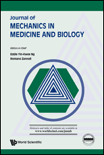
Journal of Mechanics in Medicine and Biology
Unveiling the Mechanics Behind Life's ComplexitiesThe Journal of Mechanics in Medicine and Biology, published by World Scientific Publishing Co Pte Ltd, serves as a critical platform for interdisciplinary research at the intersection of engineering and biomedical sciences. With an ISSN of 0219-5194 and E-ISSN of 1793-6810, this esteemed journal has been dedicated to exploring the mechanical principles that govern biological systems since its inception in 2008. Based in Singapore, it addresses a diverse range of topics, from biomaterials to biomechanics, contributing valuable insights into the field’s evolving landscape. Although currently positioned in Q4 of Biomedical Engineering according to the 2023 category quartiles, it is poised for growth and increased visibility within the scientific community, fostering innovation and collaboration among researchers, professionals, and students alike. The journal emphasizes the importance of cutting-edge research and its practical implications, making it a vital resource for those striving to enhance the future of medical technologies and biological understanding.

Biomedical Engineering Online
Bridging the gap between engineering excellence and medical advancements.Biomedical Engineering Online, published by BMC, is an esteemed open-access journal in the United Kingdom that has been advancing the field of biomedical engineering since its inception in 2002. With a commitment to disseminating high-quality research, the journal encompasses a broad scope, including innovative studies in biomaterials, imaging technologies, and medical applications. Recognized within the Q2 quartile for various categories such as Biomaterials and Biomedical Engineering, it ranks favorably among its peers: Rank #58 out of 333 in Radiology, and Rank #15 out of 63 in Radiological and Ultrasound Technology in the Scopus database. These rankings, coupled with an open-access model, ensure that critical advancements in medical technology are accessible to researchers, health professionals, and students globally. As it continues through its converged years from 2002 to 2024, Biomedical Engineering Online remains an invaluable resource for anyone involved in the cutting-edge intersection of engineering and medicine.
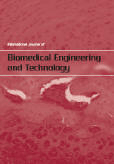
International Journal of Biomedical Engineering and Technology
Driving Progress in Biomedical Engineering and TechnologyThe International Journal of Biomedical Engineering and Technology, published by INDERSCIENCE ENTERPRISES LTD, serves as a pivotal platform for the dissemination of innovative research in the field of biomedical engineering. This journal, with ISSN 1752-6418 and E-ISSN 1752-6426, has been a valuable resource since its inception in 2007, boasting a converged publication timeline extending to 2024. Based in the United Kingdom, the journal aims to bridge the gap between engineering and biomedical sciences, facilitating interdisciplinary collaboration. As reflected in its 2023 Scopus ranking in the Q4 quartile of Biomedical Engineering, the journal remains accessible for researchers at various stages of their careers, contributing to its significance in promoting advancements in healthcare technologies. While currently not an open-access publication, the journal remains dedicated to enriching the biomedical engineering community by presenting novel research that addresses critical challenges, ultimately aiming to improve patient outcomes and drive innovation in medical devices and therapies.

Physical and Engineering Sciences in Medicine
Engineering Progress in Biomedical SciencePhysical and Engineering Sciences in Medicine is an esteemed peer-reviewed journal published by SPRINGER, dedicated to advancing the interdisciplinary fields of biomedical engineering and biophysics. With an ISSN of 2662-4729 and an E-ISSN of 2662-4737, this journal has carved a niche for itself since its inception in 2020. Situated in the Netherlands, it serves as a global platform for innovative research and developments that bridge the physical sciences and engineering with medical applications. The journal boasts a commendable range of quartile categorizations, highlighting its impact in various sectors including Instrumentation (Q1), Radiology (Q2), and Biotechnology (Q2). Its Scopus rankings further emphasize its relevance and quality, placing it in the top 15% in several categories. Being an Open Access title, it promotes the dissemination of knowledge, ensuring that vital research is accessible to all, thereby fostering collaboration among researchers, professionals, and students alike. The journal's objectives include promoting cutting-edge research, enhancing biomedical technology, and addressing complex health challenges through innovative engineering solutions, establishing it as a vital resource in the scientific community.
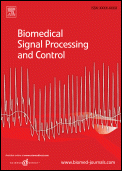
Biomedical Signal Processing and Control
Exploring the frontiers of biomedical signal processing.Biomedical Signal Processing and Control is a premier academic journal published by ELSEVIER SCI LTD that stands at the forefront of the rapidly evolving fields of biomedical engineering, health informatics, and signal processing. With an impressive impact factor reflecting its scholarly influence and high standards of research, this journal has been recognized in the Q1 quartile category across multiple disciplines as of 2023. Specifically, it holds esteemed positions within Biomedical Engineering, Health Informatics, and Signal Processing, where it ranks in the top tier of its field on Scopus: #19/131, #21/138, and #47/303 respectively. Published continually from 2006 to 2024, the journal serves as a critical platform for researchers, healthcare professionals, and students, fostering innovation in signal processing techniques and their applications in biomedical systems. Access to cutting-edge research and methodologies makes it an indispensable resource for advancing knowledge and practice within these interdisciplinary domains.
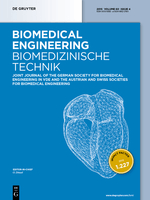
Biomedical Engineering-Biomedizinische Technik
Exploring the Intersection of Engineering and MedicineBiomedical Engineering-Biomedizinische Technik, published by WALTER DE GRUYTER GMBH, serves as a pivotal platform for advancing knowledge in the field of biomedical engineering and medicine since its inception in 1956. With an ISSN of 0013-5585 and an E-ISSN of 1862-278X, this peer-reviewed journal offers accessible insights into innovative research and technological advancements that are reshaping healthcare practices and biomedical applications. Although rated in the Q3 category for both Biomedical Engineering and Miscellaneous Medicine in 2023, the journal's impact factor and growing reputation demonstrate its vital role in fostering academic dialogue and collaboration. The journal is based in Germany, while its scope encompasses a diverse range of topics, thus bridging the gap between engineering and medical disciplines. Researchers, professionals, and students alike are encouraged to engage with the content that not only highlights contemporary challenges but also presents groundbreaking solutions in biomedical technology.
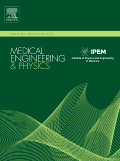
MEDICAL ENGINEERING & PHYSICS
Bridging Science and Medicine for a Healthier TomorrowMEDICAL ENGINEERING & PHYSICS, published by Elsevier Science Ltd, is an esteemed journal in the fields of Biomedical Engineering and Biophysics. With an ISSN of 1350-4533 and an E-ISSN of 1873-4030, it has established itself as a significant resource from its inception in 1994, continuing to deliver pivotal research up to 2024. This journal, categorized in the Q3 quartile for both Biomedical Engineering and Biophysics, holds a respectable position in Scopus rankings, boasting its relevance in the upper echelons of academic inquiry, particularly ranking #75/152 in Biophysics and #158/303 in Biomedical Engineering. Authors and researchers in these dynamic fields will find the journal’s rigorous peer-review process and commitment to publishing high-quality original research invaluable for advancing their work. Although the journal is not open access, it continues to attract submissions that push the boundaries of innovation and application in medical technologies, making it an essential resource for anyone dedicated to the integration of engineering principles with medical sciences.

Advanced Biomedical Engineering
Connecting scholars to shape the landscape of biomedical engineering.Advanced Biomedical Engineering is a peer-reviewed open access journal published by the Japanese Society for Medical & Biological Engineering, dedicated to disseminating high-quality research in the multidisciplinary fields of biomedical engineering. Boasting an ISSN of 2187-5219, this journal has been pivotal since its inception in 2018, especially as it embraces the open access model to foster knowledge sharing and wide accessibility. Centered in Tokyo, Japan, it serves as a vital platform for scholars and practitioners across various domains, such as biomaterials, biomedical engineering, and biotechnology. Despite currently residing in the Q4 quartile across several categories, including those in biotechnology and computer science applications, the journal is committed to elevating its academic impact and reputation, aiming for improved rankings in Scopus and other databases. Researchers and professionals are encouraged to contribute their innovative findings, discussions, and case studies, facilitating the advancement of this dynamic field.
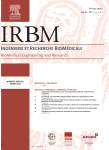
IRBM
Exploring the Frontiers of Biomedical Research and InnovationIRBM, published by Elsevier Science Inc, stands at the forefront of research in the domains of Biomedical Engineering and Biophysics, boasting impressively high rankings with a Q1 category in both fields according to the 2023 evaluations. With an effective focus on cutting-edge innovations and methodologies, IRBM provides a vital platform for researchers, professionals, and students alike seeking to disseminate and access groundbreaking findings and developments. Its strong presence in the Scopus database, with ranks of #12 in Biochemistry, Genetics and Molecular Biology and #42 in Biomedical Engineering, places it in the top percentile of impactful journals in the field, making it a crucial resource for advancing knowledge and fostering collaboration. While the journal maintains a traditional subscription model, it continues to attract a diverse readership eager for insightful studies and reviews that push the boundaries of science and engineering. With a projected convergence of years extending to 2024, IRBM promises to remain a significant contributor to the ongoing dialogue in the life sciences.

Biocybernetics and Biomedical Engineering
Leading the Charge in Biocybernetic ResearchBiocybernetics and Biomedical Engineering, published by ELSEVIER in the Netherlands, is a prestigious journal that stands at the forefront of the intersecting fields of biomedical engineering and artificial intelligence. With an impressive Impact Factor that places it in the Q1 category for Biomedical Engineering, this journal not only ranks 17th out of 303 in Scopus but also boasts a remarkable percentile ranking of 94th, highlighting its influence and relevance within the scientific community. Since its inception in 2008, Biocybernetics and Biomedical Engineering has aimed to publish cutting-edge research that integrates principles of cybernetics with technological advancements in health care, thereby fostering innovations that improve patient outcomes. Dedicated to advancing knowledge in biomedical technology, the journal serves as a vital resource for researchers, professionals, and students seeking to explore the latest developments and methodologies in the field.